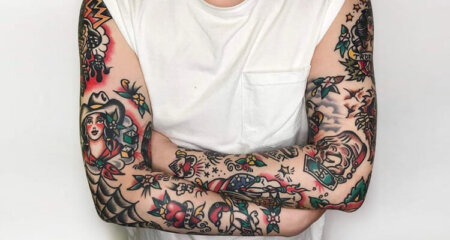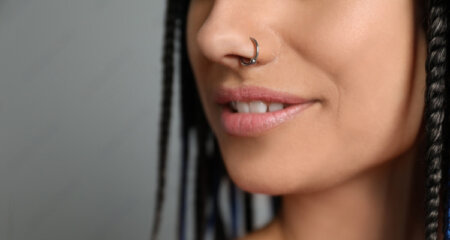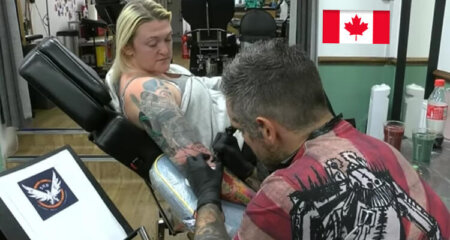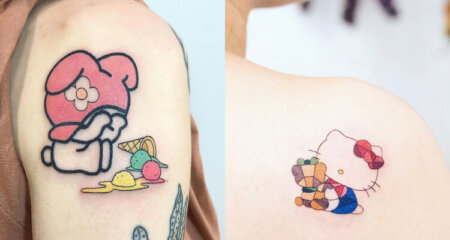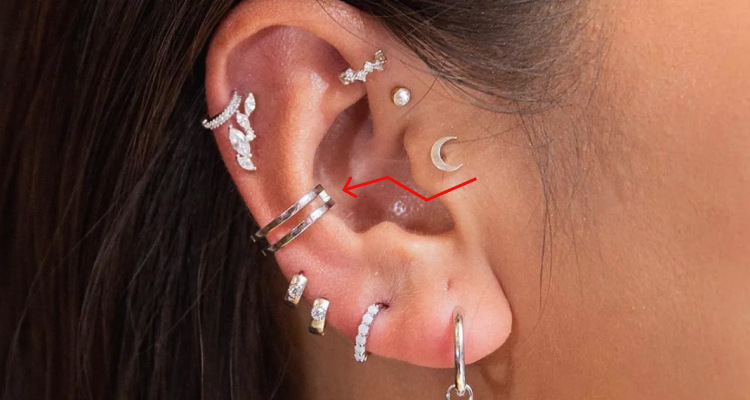
Guide to Conch Piercings Procedure, Jewelry, Healing Time
Posted on
A Conch piercing is an increasingly popular and stylish ear piercing that has taken the world of body art by storm. Nestled in the center of the ear’s cartilage, the Conch piercing adds a touch of edginess and individuality to one’s appearance. Unlike traditional lobe piercings, the Conch piercing involves puncturing the thick cartilage, offering a unique and slightly more intense piercing experience.
The Conch piercing comes in two main varieties: the Inner Conch and the Outer Conch, each offering distinct aesthetic choices. From jewelry options to aftercare tips, this paper will steer you through everything you must learn about this captivating and avant-garde piercing trend.
What is Conch Piercing?
A Conch piercing is an ear piercing that implicates puncturing the cartilage of the ear’s conchal bowl. The conchal bowl is the curved, shell-like structure that forms the center of the ear. Conch piercings can be categorized into two main types: the Inner Conch and the Outer Conch.
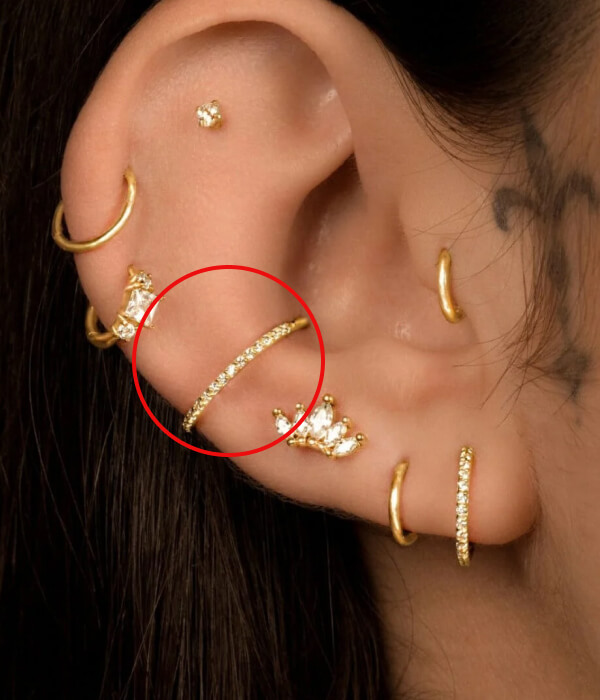
The Inner Conch is positioned near the ear canal, while the Outer Conch is situated nearer to the border of the ear. This piercing has gained popularity for its versatility and aesthetic appeal, allowing individuals to express their style through various jewelry options, such as hoops, studs, and dainty rings. As with any piercing, appropriate aftercare is important to guarantee a successful healing process.
Conch Piercing Variants
In addition to the choice between inner and outer conch piercings, there are various other captivating variations to consider for your conchal bowl. One popular option is the double- or triple-conch piercing, which lets you get creative with your middle ear cartilage. Whether you opt for stacked piercings on top of each other or a horizontal arrangement, this style pairs beautifully with a cartilage party.
It’s wise to plan if you desire multiple conch piercings, as this will help you design a stunning conch cluster. While getting more than one piercing at once is possible, it’s advisable to prioritize aftercare by getting them done individually. This way, you can ensure proper healing and minimize potential complications.
The procedure of conch piercing
Conch piercing is a meticulous process that should only be executed by a skilled piercer. The process typically begins with thoroughly cleaning the conchal bowl area to minimize the risk of infection. The piercer then carefully marks the precise location for the piercing, involving the client in the decision-making process to ensure satisfaction with the placement.
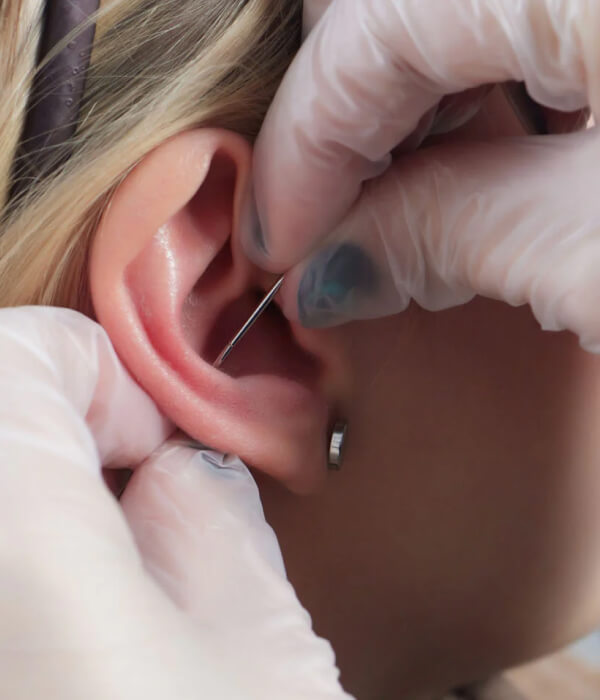
Utilizing a hollow piercing needle, the piercer skillfully creates the opening for the jewelry insertion. For those desiring larger jewelry, an alternative technique called dermal punching may be used, wherein a small device removes a circle of cartilage.
Once the piercing is completed, the chosen jewelry is delicately inserted into the freshly pierced hole. To alleviate any potential bleeding, gentle pressure is applied to the area. Finally, the piercer provides aftercare instructions to maintain proper hygiene and support healing.
Pain and healing time
1. Conch Piercing Pain
The discomfort encountered during a conch piercing can change from individual to individual. Some individuals may describe it as a quick, sharp pinch, while others might feel a more intense sensation due to pierced cartilage. However, most people report that the pain is tolerable and short-lived.
Using a hollow needle by a skilled piercer can minimize discomfort, and the entire process usually takes only a few seconds. After the initial piercing, some soreness, tenderness, and swelling might be expected during the healing period.
2. Healing Time
The healing time for a conch piercing can be relatively longer compared to lobe piercings due to the presence of cartilage tissue. Usually, the Conch piercing takes about 6 to 12 months to heal completely. Yet, individual healing periods can differ based on aftercare practices, overall health, and adherence to professional advice.
During the healing period, it’s crucial to evade touching the piercing with unclean hands, utilizing harsh cleaning solutions, and prematurely changing jewelry. Consistent care and patience are essential to ensure a successful healing process and to lower the chance of difficulties.
3. Cleaning Procedure
Proper cleaning is essential during the healing period of conch piercings, which may take 4-12 months. Different piercers may offer slightly varied instructions. Some recommend using a saline solution with clean gauze, while others suggest gentle soap lathering around the piercing before rinsing.
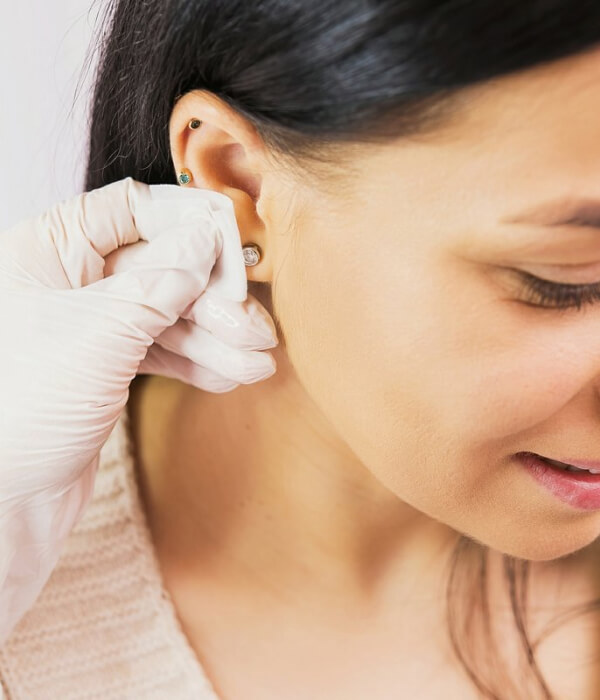
However, it is crucial to avoid harsh cleansers or alcohol, as they can be damaging. Before handling or cleansing the piercing, thorough handwashing is vital to reduce infection risks. After rinsing, gently pat the area dry with a hygienic, disposable paper towel. Consistent cleaning should be maintained for up to a year, even if the piercing seems to heal sooner, to ensure proper healing and reduce the risk of infection.
4. Conch Piercing Benefits
While some individuals claim that conch piercings can offer benefits such as alleviating migraines and anxiety, it’s essential to note that scientific evidence supporting these claims remains limited. The existing study has primarily concentrated on the impacts of daith piercings on migraine frequency and severity.
A case study 2017 referenced an online survey of 380 migraine sufferers who underwent daith piercings, with 47.2% reporting reduced migraine frequency. However, the placebo effect may influence these findings, emphasizing the need for further research to establish any potential link between conch piercings and migraine relief.
Similarly, anecdotal reports suggest that daith piercings might help with anxiety by stimulating acupressure points associated with homeostasis. However, no peer-reviewed research currently investigates the effect of conch piercings or daith piercings on anxiety. While some individuals may claim benefits from conch piercings, more rigorous scientific studies are required to validate these assertions.
Risks of couch piercing
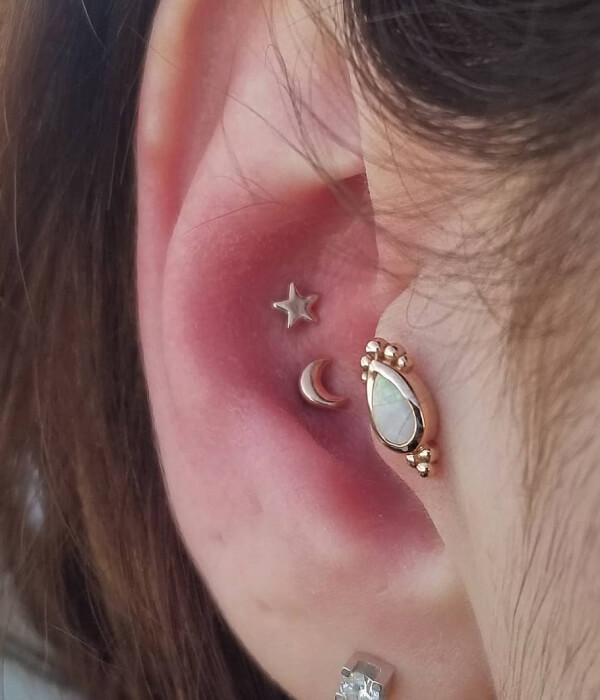
- Infection: Like any piercing, there is a disease risk if proper aftercare is not followed.
- Swelling and Discomfort: Swelling, tenderness, and discomfort are expected during the healing period.
- Keloids: Some people may be prone to keloid formation, causing increased and thickened scars.
- Allergic Reactions: Allergic reactions to specific metals employed in jewelry can lead to irritation and complications.
- Migration and Rejection: The body may consider the jewelry an unfamiliar entity, directing to migration or rejection of the piercing.
- Nerve Damage: Improper piercing technique could damage nerves, guiding to temporary or permanent numbness.
- Scarring: Poor aftercare or frequent manipulation of the piercing may result in undesirable scarring.
- Hematoma: Excessive bleeding during the piercing process can lead to a hematoma, a localized blood collection.
- Ear Trauma: Active individuals or those participating in contact sports may experience trauma to the piercing site.
- Ear Cartilage Damage: Incorrect placement or excessive force during piercing may cause cartilage damage.
Jewelry material used for conch piercing
Regarding ConchConch piercing jewelry, various materials cater to different preferences and sensitivities. One popular option is surgical-grade stainless steel, known for its durability and resistance to corrosion. Titanium is another excellent choice, appreciated for being lightweight, hypoallergenic, and available in various vibrant colors through anodization.
Gold (yellow and white) offers an elegant and timeless appeal for those seeking luxury. Additionally, biocompatible materials like niobium and PTFE (polytetrafluoroethylene) are favored for their hypoallergenic properties, making them suitable for individuals with metal allergies. It’s essential to choose high-quality jewelry to ensure a safe and comfortable healing process while expressing one’s style with confidence.
Types of jewelry used for conch piercing
Conch piercings offer various jewelry options to suit different tastes and styles. One of the most popular choices is the captive bead ring (CBR), a circular ring encircles the conchal bowl with a removable bead that clasps the ends together. Another standard option is the barbell, which consists of a straight post with a decorative ball on each end.
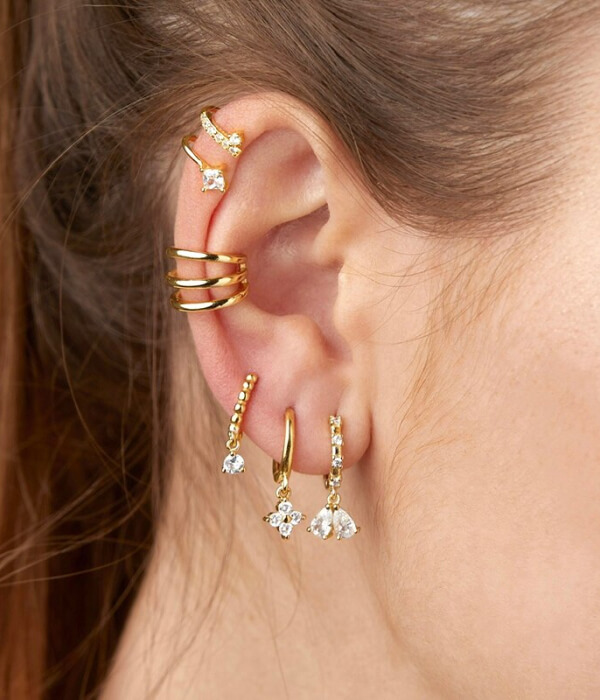
Individuals often go for labret studs for a more elegant and delicate look, featuring a flat backplate on one end and a decorative top on the other. Additionally, conch shields and ear cuffs provide unique and edgy alternatives, hugging the ear’s contours for a distinctive appearance. The availability of different materials, such as titanium, stainless steel, and gold, further adds to the versatility of ConchConch piercing jewelry.
How Much Does Conch Piercing Cost?
A conch piercing typically ranges from $30 to $90. However, it is crucial to prioritize the experience and expertise of the piercer over the cost, especially for cartilage piercings prone to scarring if not handled correctly. Selecting a skilled professional will guarantee a secure and prosperous piercing experience.
Avoid opting for piercers who use piercing guns, as they may lack sufficient experience, and such tools can cause damage to the ear. It’s best to seek out a reputable piercer who uses a hollow piercing needle for a more precise and controlled procedure. Investing in a well-executed conch piercing is essential for aesthetics and long-term ear health.
How to change out Conch piercing
Changing out a conch piercing requires caution and proper technique to avoid complications. Here’s a step-by-step guide
- Wait for Full Healing: Ensure your conch piercing is completely healed before switching the jewelry. Healing time can take several months, and premature changing can lead to irritation or infection.
- Wash Hands Comprehensively: Clean your hands with soap and water to reduce the chance of introducing bacteria to the piercing.
- Sterilize New Jewelry: Disinfect the new jewelry using a saline solution or rubbing alcohol.
- Gently Remove Existing Jewelry: Unscrew the bead or remove the jewelry following the original insertion direction.
- Insert New Jewelry Carefully: Secure the new jewelry with the bead or closure, ensuring it’s not too tight or loose.
- Monitor for Discomfort: Be alert to any symptoms of irritation or discomfort, and seek professional help.
- Continue Aftercare: Maintain regular cleaning and proper aftercare to encourage healing and stop infection.
If you encounter difficulties or discomfort during the process, seek assistance from a professional piercer.
FAQ’s
1. Can a conch piercing help with migraines or anxiety?
Some individuals claim that conch piercings may help alleviate migraines and anxiety, but limited scientific evidence supports these claims. The research conducted so far has mainly focused on Daith piercing’s potential effects on migraines, and more studies are needed to investigate the link between conch piercings and these conditions.
2. How do I clean my Conch piercing?
Cleaning your Conch piercing regularly is crucial to prevent infection. Some piercers recommend using a saline solution with clean gauze, while others suggest using a gentle soap and thoroughly rinsing. It’s essential to avoid alcohol or harsh cleansers, as they can damage the piercing. Always wash your hands comprehensively before handling the piercing.
3. What are the hazards related with conch piercings?
Risks of conch piercings include infection, swelling, keloids, allergic reactions to jewelry, migration or rejection of the piercing, nerve damage, scarring, hematoma, and ear cartilage damage.
4. Can I participate in sports or physical activities with a conch piercing?
It’s generally advisable to avoid contact sports or activities that may subject the piercing to excessive trauma during the healing period. Once the piercing is fully healed, you can participate in sports as usual, but consider wearing protective gear if necessary.
In conclusion, a Conch piercing is a captivating and trendy type of ear piercing that involves perforating the cartilage in the conchal bowl of the ear. Available in Inner Conch and Outer Conch variations, this piercing offers a unique way to express individuality and style. One can create a personalized look with a wide range of jewelry options, such as captive bead rings, barbells, and labret studs.
However, it’s essential to ensure the piercing is done by a professional, follow proper aftercare diligently, and allow sufficient healing time for a successful and safe piercing experience. The ConchConch piercing undoubtedly adds a touch of edginess and flair to one’s appearance, making it a popular choice among body art enthusiasts.


